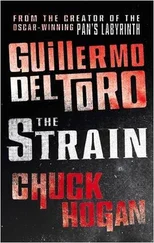Because JFK needed the taxiway cleared, the entire aircraft was towed as is into the Regis Air long-span maintenance hangar in the hour before dawn. No one spoke as the lame 777 full of dead passengers rolled past like an enormous white casket.
Once the wheel chocks were put down and the airplane was secured, black tarpaulins were laid out to cover the stained cement floor. Borrowed hospital screens were erected to curtain off a wide containment zone between the left wing and the nose. The plane was isolated in the hangar, like a corpse inside a massive morgue.
At Eph’s request, the Office of the Chief Medical Examiner of New York dispatched several senior medicolegal investigators from Manhattan and Queens, bringing with them several cartons of rubber crash bags. The OCME, the world’s largest medical examiner’s office, was experienced in multiple-casualty disaster management, and helped devise an orderly process of cadaver retrieval.
Port Authority HAZMAT officers in full contact suits brought out the air marshal first—solemnly, officers saluting the bagged corpse as it appeared at the wing door—and then, laboriously, everyone else in the first row of coach. They then removed those emptied seats, using the added space to bag the corpses before evacuating them. Each body, one at a time, was strapped to a stretcher and lowered from the wing to the tarp-covered floor.
The process was deliberate and, at times, gruesome. At one point, about thirty bodies in, one of the Port Authority officers suddenly stumbled away from the retrieval line moaning and gripping his hood. Two fellow HAZMAT officers converged on him, and he lashed out, shoving them into the hospital screens, in effect breaching the containment border. Panic erupted, people clearing the way for this possibly poisoned or infected officer clawing at his containment suit on his way out of the cavernous hangar. Eph caught up with him out on the apron, where, in the light of the morning sun, the officer succeeded in throwing off his hood and peeling off his suit, like a constricting skin. Eph grabbed the man, who then sank down onto the tarmac, sitting there with sweaty tears in his eyes.
“This city,” sobbed the officer. “This damn city.”
Later, word went around that this Port Authority officer had worked those hellish first few weeks on the pile at Ground Zero, first as part of the rescue mission, and then the recovery effort. The specter of 9/11 still hung over many of these Port Authority officers, and the current bewildering mass-casualty situation had brought it crashing down again.
A “go team” of analysts and investigators from the National Transportation Safety Board in Washington, D.C., arrived aboard an FAA Gulfstream. They were there to interview all involved with the “incident” aboard Regis Air Flight 753, to document the aircraft’s final moments of navigability, and to retrieve the flight-data recorder and the cockpit voice recorder. Investigators from the New York City Department of Health, having been leapfrogged by the CDC in the crisis response, were briefed on the matter, though Eph rejected their jurisdiction claim. He knew he had to keep control of the containment response if he wanted it done right.
Boeing representatives en route from Washington State had already disclaimed the 777’s complete shutdown as “mechanically impossible.” A Regis Air vice president, roused from his bed in Scarsdale, was insisting that a team of Regis’s own mechanics be the first to board the aircraft for inspection, once the medical quarantine was lifted. (Corruption of the air-circulation system was the current prevailing cause-of-death theory.) The German ambassador to the United States and his staff were still awaiting their diplomat’s pouch, Eph leaving them cooling their heels in Lufthansa’s Senator Lounge inside terminal 1. The mayor’s press secretary made plans for an afternoon news conference, and the police commissioner arrived with the head of his counter-terrorism bureau inside the rolling headquarters of the NYPD’s critical response vehicle.
By midmorning, all but eighty corpses had been unloaded. The identification process was proceeding speedily, thanks to passport scans and the detailed passenger manifest.
During a suit break, Eph and Nora conferred with Jim outside the containment zone, the bulk of the aircraft fuselage visible over the curtain screens. Airplanes were taking off and landing again outside; they could hear the thrusters gaining and decelerating overhead, and feel the stir in the atmosphere, the agitation of air.
Eph asked Jim, between gulps of bottled water, “How many bodies can the M.E. in Manhattan handle?”
Jim said, “Queens has jurisdiction here, but you’re right, the Manhattan headquarters is the best equipped. Logistically, we’re going to be spreading the victims out among those two and Brooklyn and the Bronx. So, about fifty each.”
“How are we going to transport them?”
“Refrigerated trucks. Medical examiner said that’s how they did the World Trade Center remains. Fulton Fish Market in Lower Manhattan, they’ve been contacted.”
Eph often thought of disease control as a wartime resistance effort, he and his team fighting the good fight while the rest of the world tried to get on with their daily lives under the cloud of occupation, the viruses and bacteria that plagued them. In this scenario, Jim was the underground radio broadcaster, conversant in three languages, who could procure anything from butter to arms to safe passage out of Marseilles.
Eph said, “Nothing from Germany?”
“Not yet. They shut down the airport for two hours, a full security check. No employees sick at the airport, no sudden illnesses being reported to hospitals.”
Nora was anxious to speak. “Nothing here adds up.”
Eph nodded in agreement. “Go ahead.”
“We have a plane full of corpses. Were this caused by a gas, or some aerosol in the ventilation system—accidental or not—they would not have all gone so … I have to say, so peacefully. There would have been choking, flailing. Vomiting. Turning blue. People with different body types going down at different times. And attendant panic. Now—if instead this was an infectious event, then we have some kind of crazy-sudden, totally new emerging pathogen, something none of us have ever seen. Indicating something man-made, created in a lab. And at the same time, remember, it’s not just the passengers who died—the plane itself died too. Almost as though some thing, some incapacitating thing, hit the airplane itself, and wiped out everything inside it, including the passengers. But that’s not exactly accurate, is it? Because, and I think this is the most important question of all right now, who opened the door?” She looked back and forth between Eph and Jim. “I mean—it could have been the pressure change. Maybe the door had already been unlocked, and the aircraft’s decompression forced it open. We can come up with cute explanations for just about anything, because we’re medical scientists, that’s what we do.”
“And those window shades,” said Jim. “People always look out the windows during landing. Who closed them all?”
Eph nodded. He had been so focused on the details all morning, it was good to step back and see strange events from a distance. “This is why the four survivors are going to be key. If they witnessed anything.”
Nora said, “Or were otherwise involved.”
Jim said, “All four are in critical but stable condition in the isolation wing at Jamaica Hospital Medical Center. Captain Redfern, the third pilot, male, thirty-two. A lawyer from Westchester County, female, forty-one. A computer programmer from Brooklyn, male, forty-four. And a musician, a celebrity from Manhattan and Miami Beach, male, thirty-six. His name is Dwight Moorshein.”
Читать дальше












